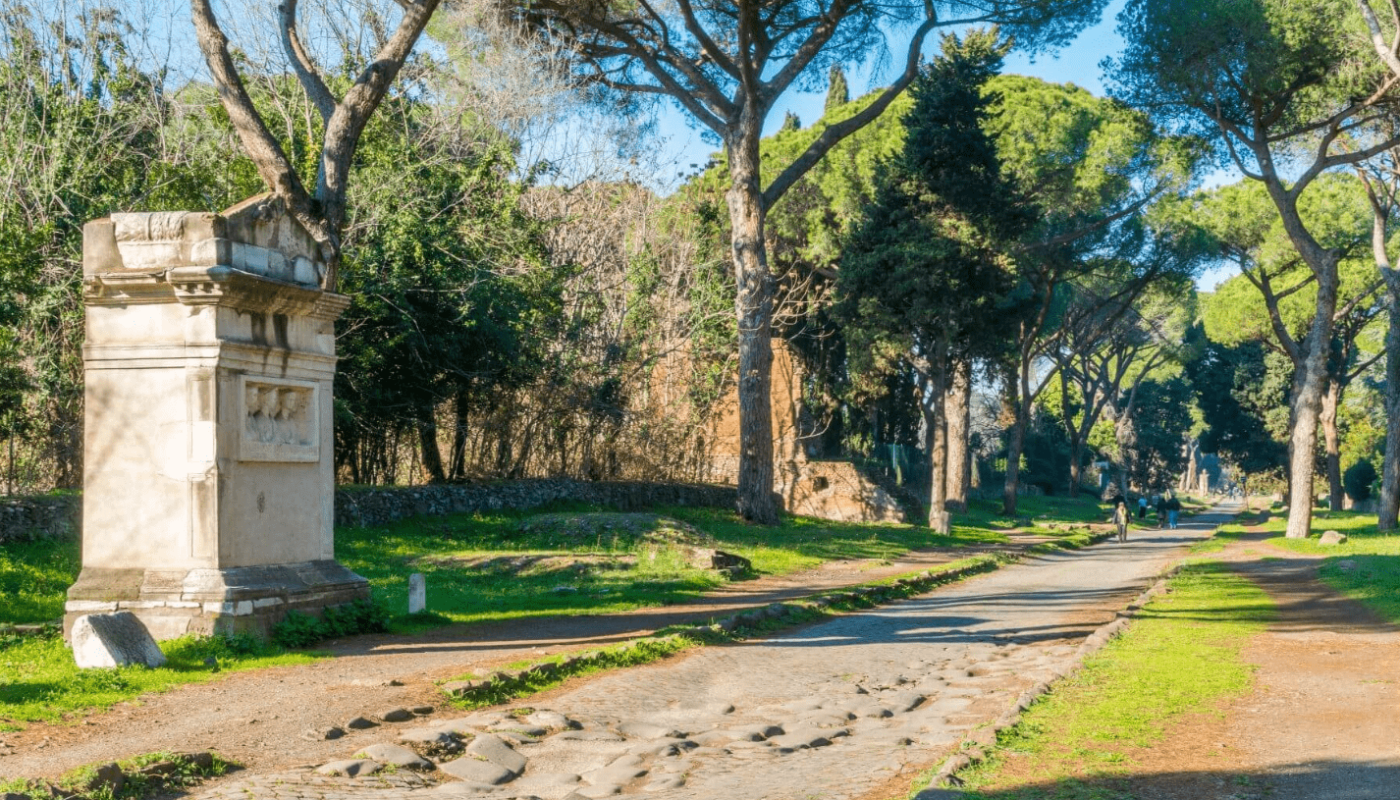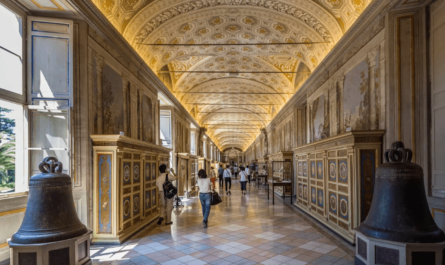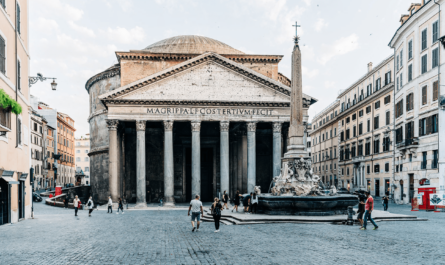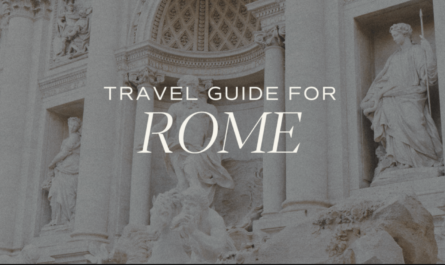Villa Torlonia Park: Rome is renowned for its lush parks, with the bustling Villa Borghese and the refined Villa Pamphilj often stealing the spotlight. Yet, nestled away and often overlooked is the charming Villa Torlonia park—a smaller urban oasis brimming with history, art, and verdant spaces.
Villa Torlonia, like many of Rome’s parks, was once the estate of a noble family. Unlike some of its more famous counterparts, such as Villa Pamphilj where the opulent Casino del Bel Respiro is off-limits, Villa Torlonia’s buildings are open for exploration.
A blend of ancient history and contemporary architecture, Villa Torlonia offers a unique glimpse into Rome’s rich tapestry of history, culture, and society. Located in the lesser-known Nomentano district, this elegant neighborhood is a treasure trove of secrets and hidden gems.
Though smaller than the grand Villa Borghese, Villa Ada, and Villa Pamphilj, Villa Torlonia is packed with attractions that make a visit worth the short trip from the city center.
We’ve crafted this guide to inspire you to explore Villa Torlonia, helping you navigate and fully appreciate its offerings.
History of Villa Torlonia Park in Rome
The origins of Villa Torlonia date back to the 17th century when it was owned by the influential Pamphilj family. Later acquired by the Colonna family, it was sold to Giovanni Torlonia in 1797. A French banker who had moved to Rome in the 18th century, Torlonia’s acquisition marked the beginning of a significant rise for his family, acquiring numerous properties around Rome.
Giuseppe Valadier, the architect behind the design of Piazza del Popolo, oversaw the villa’s initial renovation. His work was followed by his son, Alessandro Torlonia, who commissioned further enhancements between 1835 and 1840. These included expanding the Casino Nobile, refurbishing Casino dei Principi, and updating the old stables.
Venetian architect Giuseppe Jappelli introduced an English-style garden and unique buildings such as the Swiss Hut and Moorish Greenhouse. Later, the Capanna Svizzera was transformed into the whimsical Casina delle Civette.
Villa Torlonia gained notoriety as the residence of Benito Mussolini from 1925 to 1943. Mussolini rented the Casino Nobile for a nominal fee, while other buildings, like the Casina delle Civette, were used by different members of the Torlonia family.
After the death of Giovanni Torlonia jr. in 1938 and subsequent damage during WWII, the villa fell into disrepair. It was only in 1978, when acquired by Rome’s local council, that restoration work began. Today, all buildings are open to the public, each serving a distinct purpose.
Mussolini at Villa Torlonia
For nearly two decades, Benito Mussolini resided with his family at Casino Nobile. Despite hosting notable events, such as his daughter’s wedding and Mahatma Gandhi’s visit, the residence remained primarily a private family home.
The Mussolinis made minimal alterations to the building, focusing on modernizing work areas and adding bathrooms. Other buildings on the estate were also utilized by the Mussolini family. During WWII, parts of the park were repurposed for agriculture and animal farming.
What to See and Do in Villa Torlonia Park
Explore Casino Nobile
The Casino Nobile is the park’s largest building and serves as the main attraction. Start your visit by admiring ancient relics from Claudia Semne’s mausoleum. The palace’s centerpiece is its opulent ballroom, adorned with modern and classic elements. The tour continues through lavish rooms, including the Egyptian Room and private chambers of Mussolini and his wife.
Visit Casina delle Civette
The Casina delle Civette, or Owls’ House, stands out for its distinctive owl-themed decorations. Originally the Swiss Hut, it became Casina delle Civette after extensive refurbishment. Inside, discover a collection of stained glass, sculptures, and mosaics, including the beautifully decorated guest bathroom.
Duck into Serra Moresca
Serra Moresca, the Moorish-style greenhouse, draws inspiration from Granada’s Alhambra. Its colorful stained glass and exotic plants create a captivating atmosphere. Designed by Giuseppe Jappelli, the greenhouse also features a Moorish Tower and a grotto, though not all areas are currently open to the public.
Tour Casino dei Principi
Originally a modest rural building, Casino dei Principi was transformed by Alessandro Torlonia and fully refurbished by Giovan Battista Caretti. Today, it is known for its rich decorations and elegant design.
Relax at the Limonaia
The Limonaia, once a venue for private parties and film screenings, is now a delightful restaurant and coffee shop. Enjoy a relaxed meal or coffee in this bright and inviting space.
Take Your Kids to Technotown (Villino Medievale)
Villino Medievale, transformed into Technotown, offers a range of science and technology workshops for children. It’s a creative space where kids can explore and develop new ideas.
See the Obelisks
In keeping with the grandeur of Rome, Villa Torlonia features two Egyptian-style obelisks. Though smaller than Rome’s major obelisks, they add a touch of historical charm to the park.
Visit Mussolini’s Air-Raid Shelter
Mussolini’s air-raid shelter, built 6.50 meters below the Casino Nobile, was designed to withstand bombing. Though never fully completed, it is now open for tours, offering a glimpse into its historical significance.
Do Yoga or Go Jogging
Despite its compact size, Villa Torlonia is a peaceful retreat for yoga, jogging, and relaxation away from the city’s hustle and bustle.
Soak in Nature
Covering approximately 13 hectares, Villa Torlonia boasts a variety of trees and plants. Enjoy a leisurely stroll, relax on a bench, or have a picnic amidst the park’s greenery.
What to See Around Villa Torlonia
The Nomentano district, where Villa Torlonia is located, offers additional attractions. Visit Sant’Agnese Fuori Le Mura Complex, Quartiere Coppedè, Villa Albani Torlonia, Villa Ada, Porta Pia, and MACRO for a broader exploration of the area.
Where to Eat Near Villa Torlonia
The surrounding Nomentano/Trieste neighborhood features a range of dining options. From top-notch pizza at Berberé to affordable seafood at Osteria Maré, and diverse vegan options at Ops!, there’s something for every palate.
Plan Your Visit: Practical Information
Address: Via Nomentana 70.
How to Reach: Accessible by metro (Sant’Agnese Annibaliano or Bologna stops, B line), bus (62, 66, 82), or tram (2, 3, 19).
Tickets: Individual tickets for each building are available, with discounted collective tickets for multiple sites.



